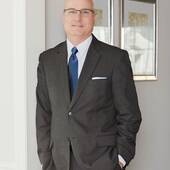When the Historic Home is NOT Historic
A very relevant article on "historic" properties and the issues surrounding their transfer, by my fellow east-coast blogger Margaret Woda of Long & Foster in Maryland...
Whoops! That historic two-story colonial in North Bethesda, Maryland, purchased for a million dollars in 2006 by Montgomery County government with state funds, is NOT quite so historic, after all. At least, not in the context for which it was purchased by the county.
Citizen activists urged the county to purchase this property because the attached log cabin was reportedly occupied by Josiah Henson, whose memoirs inspired Harriet Beecher Stowe's title character in her novel Uncle Tom's Cabin. The resolution authorizing the county to make this purchase described the cabin as "a perfectly preserved slave quarter".
The Maryland-National Capital Park and Planning Commission applied for and received state funds, apparently without any verification of the oral history. Yet, according to an article in today's Washington Post, an accurate history of the site prepared by the county's preservation staff was "readily available".
While Henson did live on the 3,700 acre Riley plantation, he occupied slave quarters, not the cabin or house. The cabin standing on the property now was an addition to the original kitchen which, along with the slave quarters, is long gone.
"That inconvenient truth," as today's Post article calls it, "presents an immediate challenge to county officials: what to call the place. The site's official name is still Uncle Tom's Cabin Special Park."
And, of course, there's still the little matter of the county spending a million dollars to purchase the property and another million to expand it after closing on the property without first performing appropriate due diligence to verify the historical significance.
This story presents an interesting case study for those of us in the real estate business.
- Did the seller and/or listing agent (if any) advertise (or even mention) that "Uncle Tom's Cabin" was located on this property? If so, was it done with/without disclaimers as to the accuracy of the information?
- Was the county represented by a real estate licensee as a buyer broker? If so, did the agent recommend to the buyer a feasibility study period for verifying the oral history?
- Did the appraiser (if any) give any value for historical significance? If so, what documentation would he require? How much more value would historical significance add to the property?
- If you or I were the listing or selling agent in this transaction, what 3rd party documentation would our Broker require for our file as to any historical significance? Would Errors & Omissions insurance protect us if it turned out the oral history was just plain wrong and we did nothing to verify it on behalf of our clients?
What about you... how would you handle a situation like this, then (at contract) and now (after the error was discovered), if you were involved in the transaction?
Copyright 2010. All rights reserved.
__________________________________________________
For answers to your real estate questions about Bowie, Crofton, Davidsonville, Fort Meade, Gambrills, Odenton and other communities in Anne Arundel County or nearby Prince George's/Howard Counties, Maryland, contact Margaret Woda at Long & Foster. If you prefer, simply click on a button below for information you can review online at your own pace.









Comments(5)